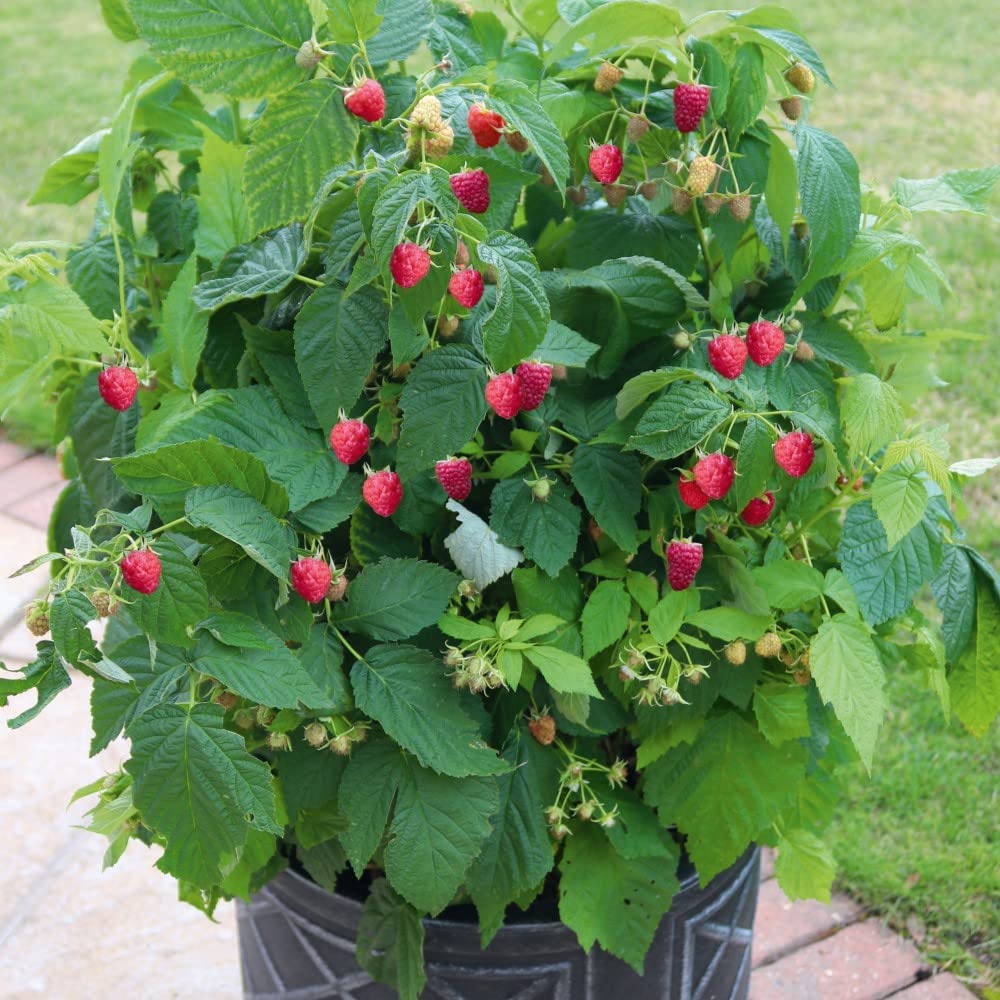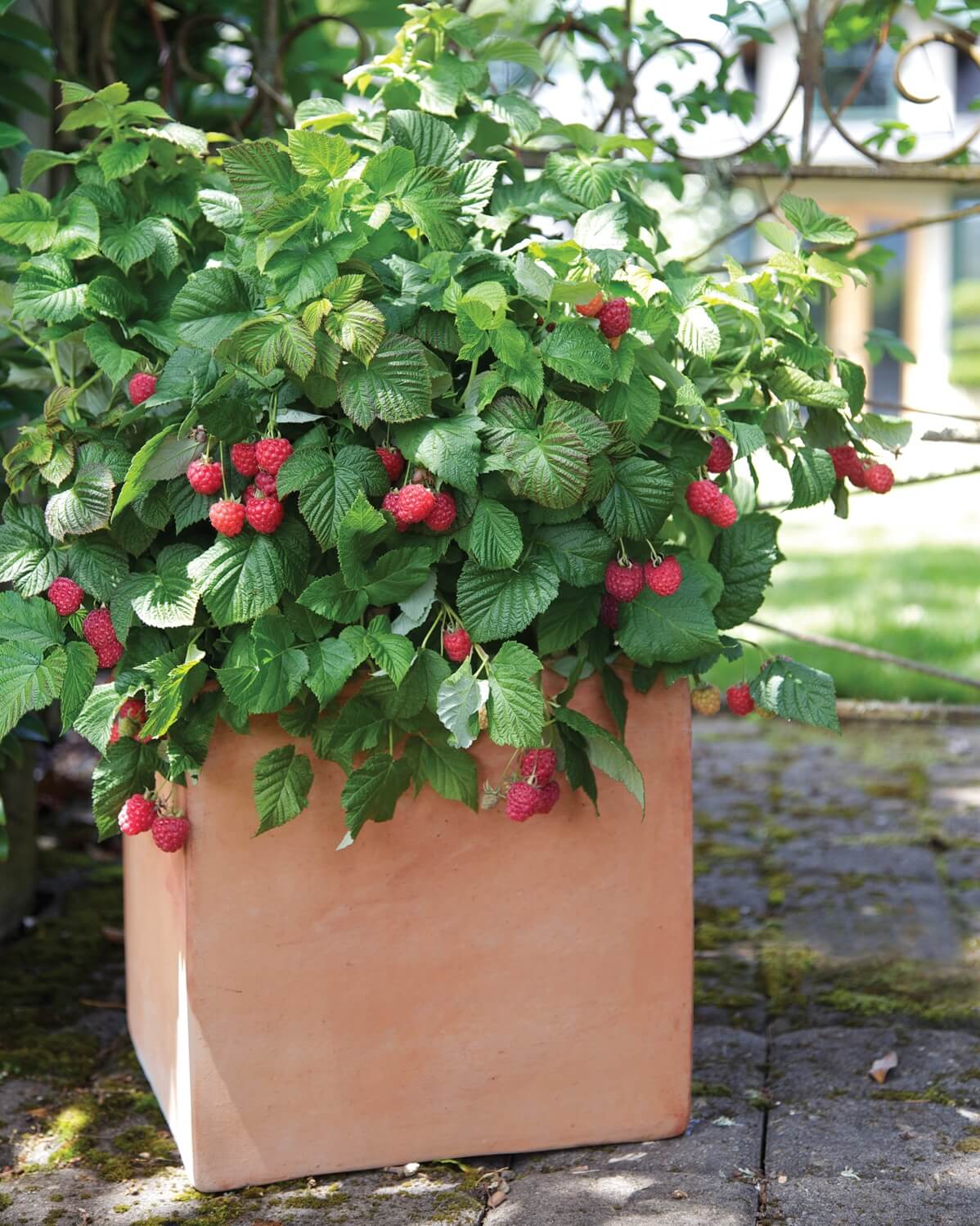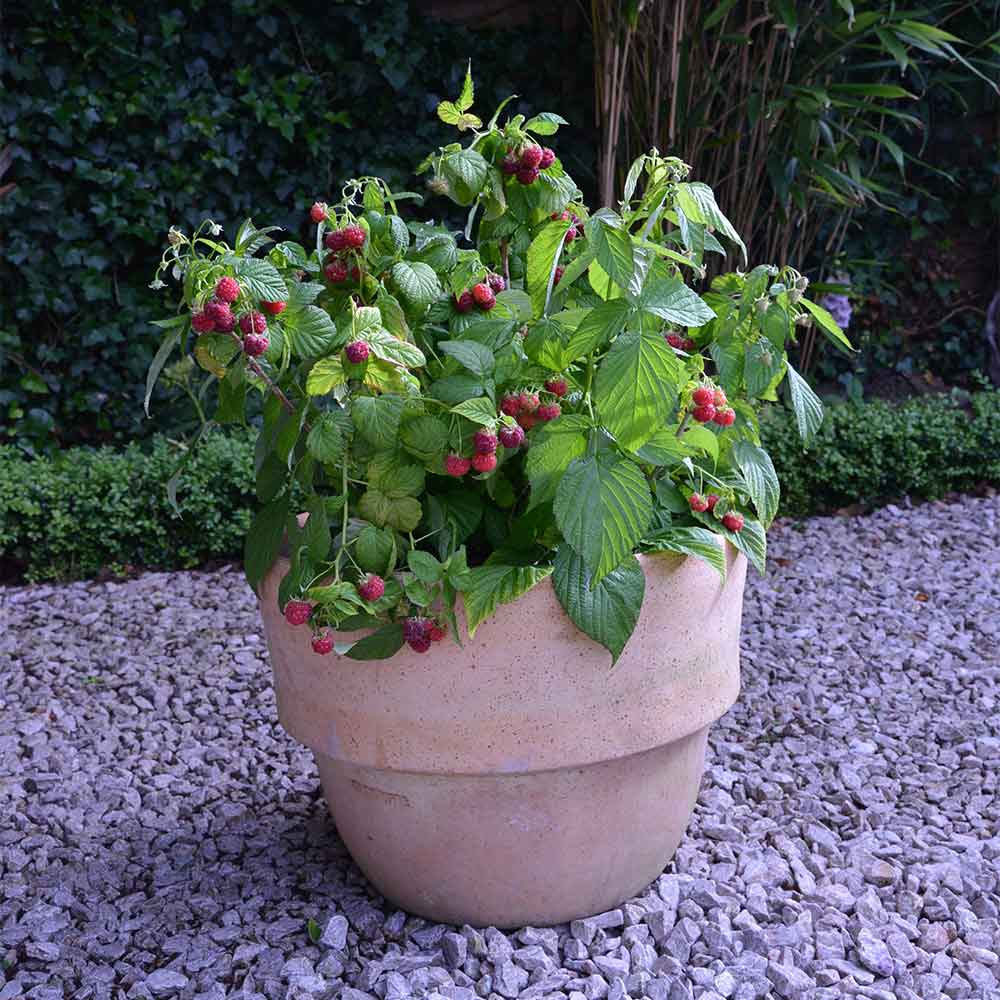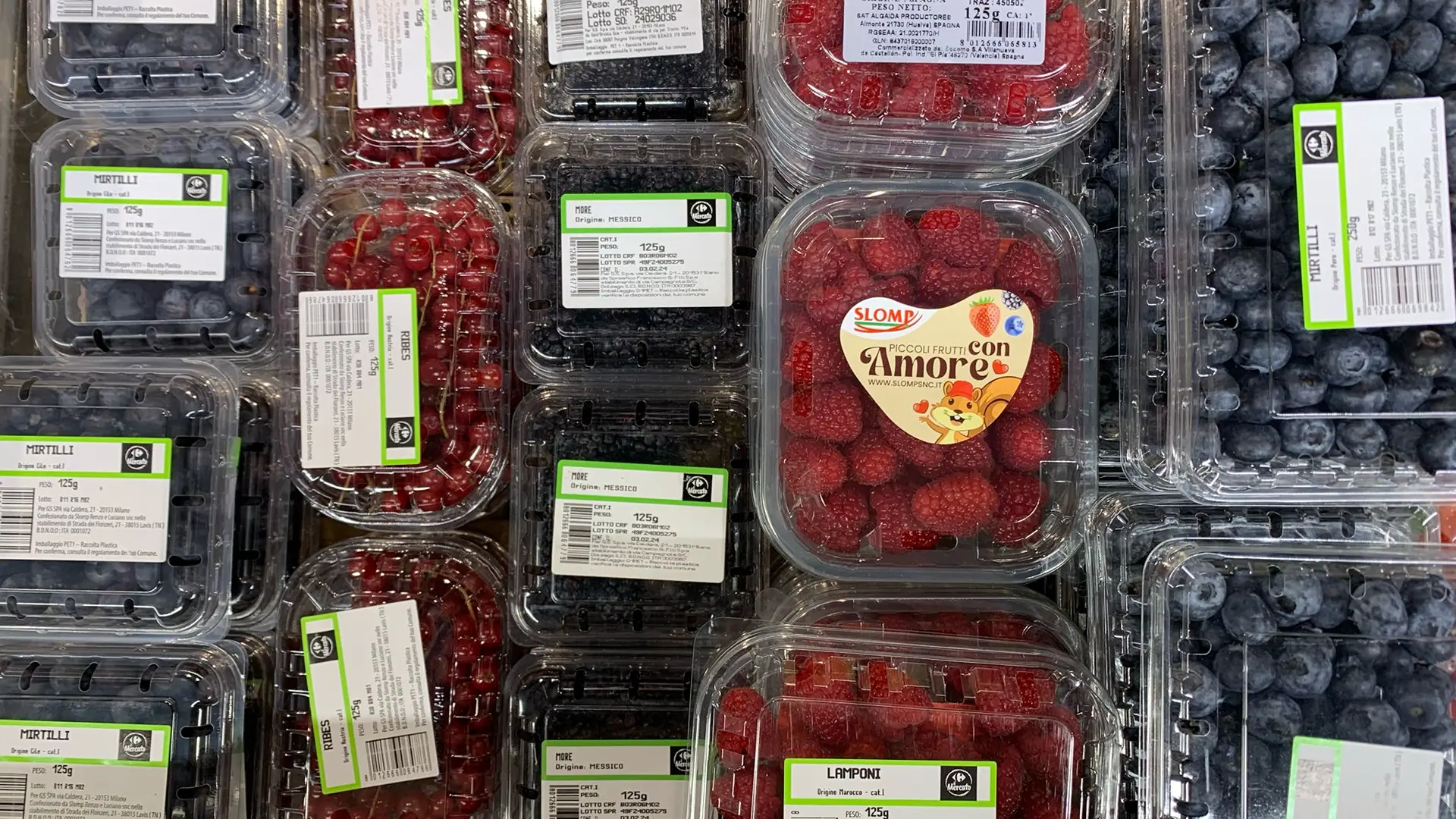| This content was developed in cooperation with Battistini Vivai. If you want to put the advice in the article into practice and grow raspberries on your balcony at home, visit the new Battistini Vivai Shop! |
The growing interest in raspberries is prompting consumers to grow these delicious fruits themselves at home, which is also possible on their own balconies.
The important thing is to provide the right conditions for this species to grow healthy, which includes choosing the right pot, a suitable location, the right variety for its goals and a soil in line with its needs.




Summary
GENERAL FEATURES
Raspberries belong to the Rosaceae family and the genus Rubus, within which there are numerous species with fruits of different colours and sizes: red, yellow, black and purple.
The varieties can be divided into two groups:
- uniforms: the fruiting shoots are carried by the previous year's shoots and bear fruit only once a year in June-July. From the stump, suckers develop in spring, which vegetate until late summer and then lignify;
- bifers or re-flowering: fruiting shoots are borne by both the year's suckers and the previous year's shoots and bear fruit in June-July and August-September.
These characteristics will allow you to choose the variety best suited to your needs.
HOW TO PLANT RASPBERRIES
First of all, it is important to choose a suitable pot because it must be large enough for the plant to grow. If the pot is too small, the plants will not grow strong enough and therefore will not be productive; furthermore, an insufficiently sized pot will not be able to protect the roots from the winter cold, which will freeze, causing the plant to die.
As a first step, a draining layer should be placed at the bottom of the pot to facilitate the drainage of excess water and at the bottom of the potting mix, not in contact with the roots, a handful of organic fertiliser.

The plant should then be placed in the hole created for insertion and the soil level should be left at the same level as in the pot of purchase.
Finally, mulch on the surface (straw, bark or similar organic matter) is useful for maintaining soil moisture, protecting the roots from temperature changes and preventing weed growth.
SUBSTRATE AND NUTRITION
Potted raspberries need soil with a pH of between 6.0 and 6.2, which retains minerals well and above all is very well draining; it is therefore advisable to use universal potting soil and mix in compost, mature manure or sphagnum moss.
Correct fertilisation is of fundamental importance in achieving a good vegetative-productive balance and helps to improve the quality and quantity of the fruit.
Nitrogen should be distributed in the spring, divided into two or three times, from March until mid-June, preferably in the form of nitrate or ammonium sulphate. A small dose of nitrogen in the form of ammonia can be given in autumn, which is useful for the development of the root system.
Phosphorus and potassium should be administered in winter as mineral superphosphate, potassium sulphate or polyphosphates in liquid form.
Since the plant in pots may experience a greater stress load than in the open field, the use of biostimulants, formulated with amino acids and humic acids will further contribute to the well-being of our plant.
EXPOSURE
Raspberries tolerate high temperatures well as long as there is sufficient water availability and they are located in partially shaded areas.
In regions where the weather is particularly cold in winter, it would be better to move the pots to a sheltered place, keeping the substrate moist, but not indoors because the heating would keep them active while it is important that they go into dormancy.
WATER NEEDS
Raspberries in pots need more water than those grown in the field.
With a terracotta pot, the choice of which is also favoured for aesthetic reasons, the soil will dry out more quickly as the material is highly transpiring, whereas with ceramic or plastic pots the internal moisture is maintained for longer.
It is essential to remember that the soil must always be moist but not soggy to avoid water stagnation.
PRUNING
Pruning, an indispensable operation, must be carried out every year and differs markedly depending on whether a uniform or a bifera plant is to be pruned.
In the case of unifloras, the work consists of cutting the fruiting shoots at ground level just after harvest or during the vegetative rest period and thinning and shortening the replacement suckers.
In the case of bifers, operations are carried out in two stages: the first time, in late autumn, the apical portion of the fruiting shoot is removed and the second time, after normal summer fruiting, the shoot is completely removed.



ADVERSITY
- Botrytis : this causes rot on the fruits, which become covered with the classic grey mould and then fall off, and on the stems, where light brown spots appear; the disease is favoured by moisture in the air and rain. Sprays with sodium bicarbonate can be used to reduce the damage.
- Stem cancer: strikes suckers in June/July with purple spots under the buds, leading to bud necrosis and premature leaf drop. In autumn the attack is recognisable because the stalk of the affected leaves does not detach from the stem; it is controlled with winter copper treatments.
- Phytophthora : the symptoms are manifested by the withering of the ends of the suckers, which curl downwards, and then extend to the whole plant, with the yellowing of the leaves, which dry out while remaining attached to the shoots. It is aggressive in cool periods such as spring and is favoured by waterlogging, so it is important to choose suitable soils and well-drained containers.
- Red spider mite: damage caused by spider mite bites occurs on the leaves, where the upper page takes on a leaden-yellow colour and the margins curve downwards, while on the underside, where the mites are found, thin white spider webs turning brown can be observed. Severe attacks cause the leaves to dry out, resulting in reduced production and fruit quality. As a preventive measure, biological control with predators of the spider mite (phytoseids) has proven to be important.
- Drosophila suzukii: this midge causes damage when it is in the larval stage, especially in summer, as the females lay their eggs in the ripening fruit and the larvae that emerge from these feed on the pulp, spoiling it. An effective remedy is to cover the plant with adult excluder nets with a mesh size of less than 1 mm.
This content has been developed with the technical support of:

All rights reserved









